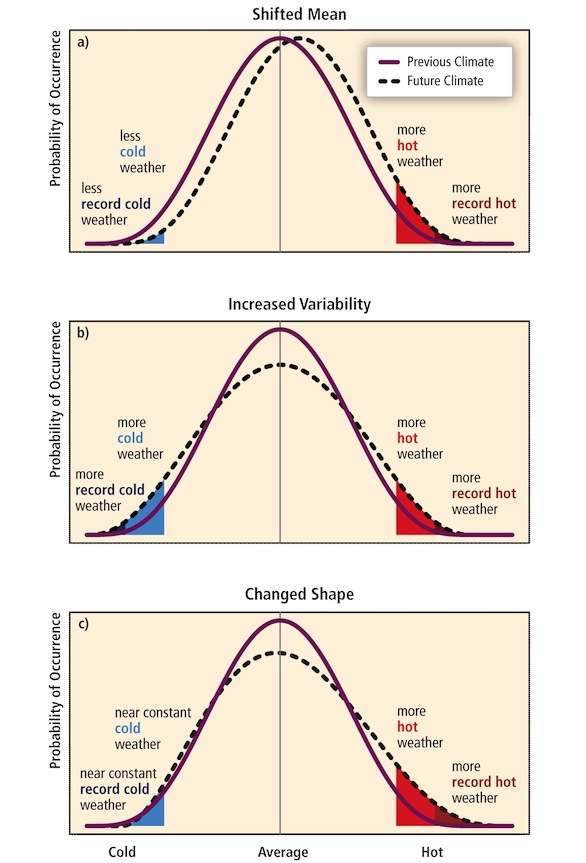Tropical cyclones and hurricanes generate the most headlines, but it’s mid-latitude storms churning through heavily populated parts of North America, Europe, and Asia that make the weather most of us actually experience.
Climate models predict that these mid-latitude storms should shift poleward and that the intensity and frequency of the storms could change as global temperatures rise, but actual evidence of such a shift has been difficult to pin down. However, a recently published analysis of 25 years of cloud data captured by satellites offers a compelling piece of evidence that suggests storm tracks are indeed shifting.
The research, led by (former) Scripps Institute of Oceanography scientist Frida Bender, shows that storms tracks have shifted poleward, narrowed, and grown less cloudy since 1983, particularly in the Southern Hemisphere. The analysis, based on data from the International Satellite Cloud Climatology Project, finds that storm tracks have shifted by about 0.4 degrees over the last 25 years.
What’s more, the analysis suggests that changes in the location and intensity of storms could amplify global warming. The researchers detected what amounts to a 2 percent decline in storm tracks over the 25 year record. The decline in cloudiness is of particular importance because it suggests that intensity of storms is likely decreasing. And since clouds reflect large amounts of sunlight, reduced cloudiness means that ocean surfaces beneath storm systems are likely growing warmer.
Graeme Stephens, the director of NASA’s Center for Climate Science at the Jet Propulsion Laboratory, underscored the importance of the study in a piece published by Nature Climate Change noting:
Bender and colleagues’ study reminds us of the importance of changes in the large-scale clouds associated with frontal storms in storm-track regions. Not only do the polewards shifts in storm-track location profoundly affect precipitation patterns in mid-latitude regions, but associated changes in cloudiness also exert a significant positive feedback on global warming.
Text by Adam Voiland. Frida Bender presented a poster about the topic at an American Geophysical Union Meeting on Dec. 6, 2011. The full paper is available here. Video of Midwest tropical storm originally published by NASA’s Earth Observatory.



